Sucrose transport is involved in aerenchymatous phellem formation
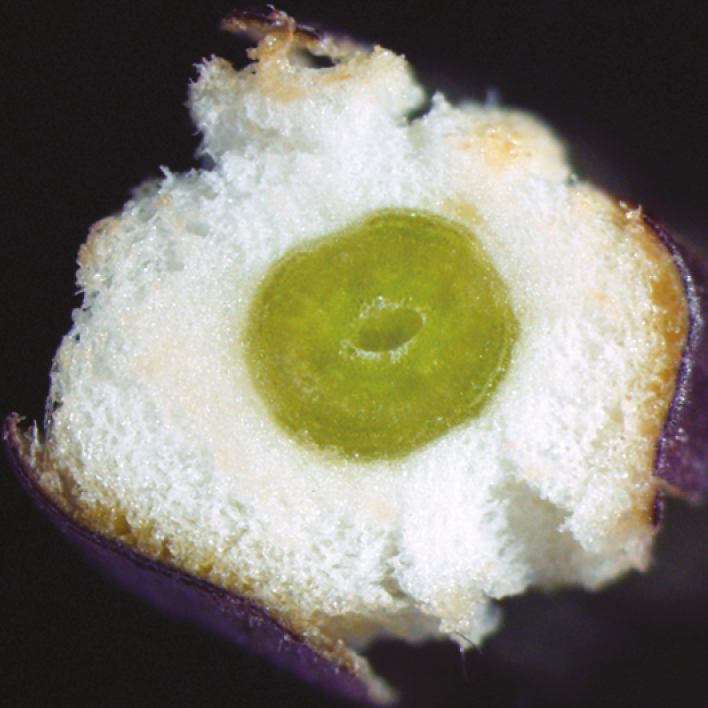
Annals of Botany 121: 723–731, 2018*
doi: 10.1093/aob/mcx205
*Published in Vol. 121 No. 4, March 2018
Aerenchymatous phellem (AP), which is derived from phellogen, plays an important role in the internal aeration of soybean under waterlogged conditions. Although waterlogging clearly induces phellogen and AP formation, it is unclear what other factors may be involved. Takahashi et al. find that phellogen formation and AP formation were clearly inhibited under darkness. Their results also strongly suggest that photosynthesis-produced sucrose and its transport via phloem is essential for phellogen and AP formation in soybean. They conclude that maintaining a high sucrose concentration is essential for phellogen and AP formation under waterlogged conditions.
Authors: Hirokazu Takahashi, Xiaohua Qi, Satoshi Shimamura, Asako Yanagawa, Susumu Hiraga, and Mikio Nakazono
The cell biology of secondary cell wall biosynthesis (Invited review)
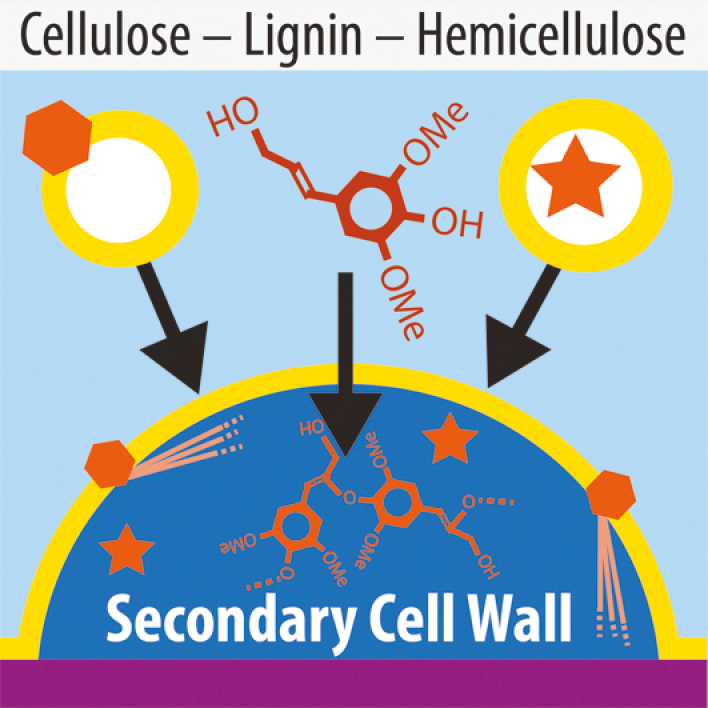
Annals of Botany 121: 1107–1125, 2018
doi: 10.1093/aob/mcy005
Secondary cell walls (SCWs) form the architecture of terrestrial plant biomass. They permit upright growth and the formation of forest canopies by reinforcing water-conducting cells and strengthening fibers. These cells synthesize a strong, thick SCW containing cellulose, hemicellulose, and lignin. Meents et al. highlight the cellular dynamics driving the coordinated synthesis and export of these SCW components. Particular attention is paid to the sweeping changes required for transition to SCW production and the mechanisms driving patterned deposition.
Authors: Miranda J. Meents, Yoichiro Watanabe, and A. Lacey Samuels
Melatonin-induced lateral root formation via H2O2
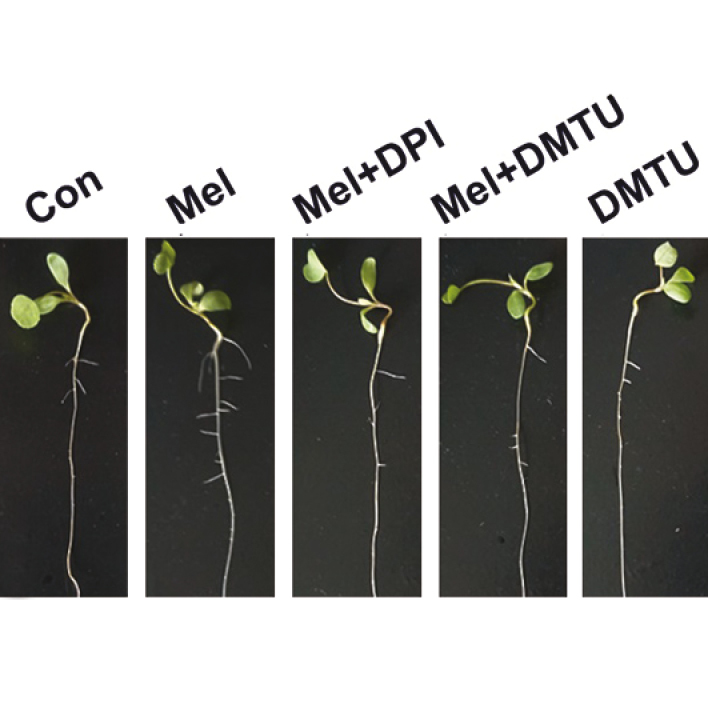
Annals of Botany 121: 1127–1136, 2018
doi: 10.1093/aob/mcx207
Lateral root (LR) formation is regarded as a critical avoidance strategy in response to unfavourable conditions and is tightly regulated by intrinsic developmental processes, environmental inputs and hormone signalling. Pharmacological and molecular evidence by Chen et al. reveals that hydrogen peroxide (H2O2) is involved in exogenous melatonin-induced LR formation in alfalfa (Medicago sativa, Fabaceae) seedlings. LR formation might also be induced by endogenous melatonin in a H2O2-dependent fashion in Arabidopsis transgenic seedlings overexpressing alfalfa MsSNAT (a melatonin synthesis gene). These findings expand our knowledge about the putative physiological roles of melatonin in plant responses against biotic and abiotic stresses, and provide a theoretical basis for further research on LR formation induced by melatonin.
Authors: Ziping Chen, Quan Gu, Xiuli Yu, Liqin Huang, Sheng Xu, Ren Wang, Wei Shen, and Wenbiao Shen
Stomatal conductance and elevated CO2
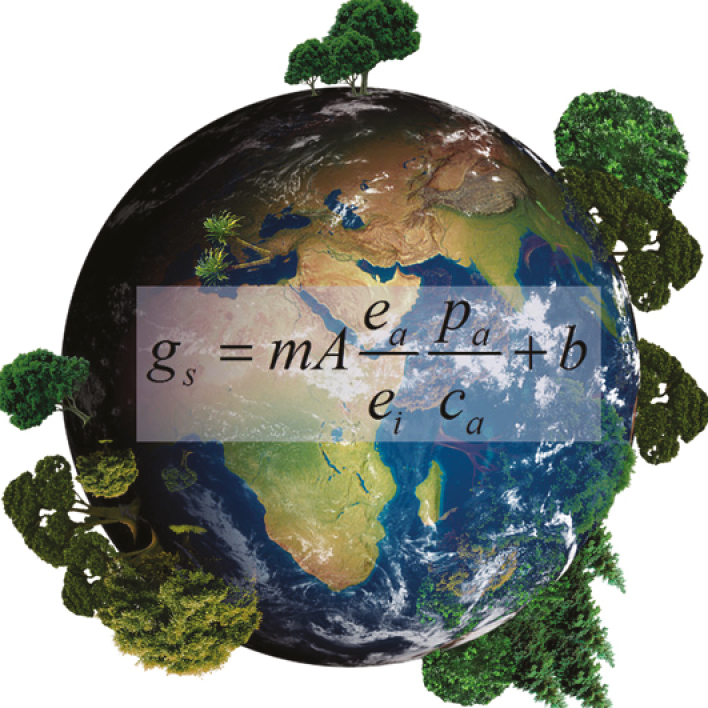
Annals of Botany 121: 1137–1149, 2018
doi: 10.1093/aob/mcx208
For over 30 years it has been generally understood that the flux of water in and out of the stomata on the surface of plant leaves has decreased in response to rising anthropogenic atmospheric CO2, having a considerable impact on the hydrological cycle. By using a combination of field studies and modelled data, Purcell, Batke, Yiotis et al. reveal that the flux of water can in fact increase in response to rising CO2. This represents a major step towards a deeper understanding of the global vegetation system, and will provide a platform for further research into the implications for the global hydrological cycle.
Authors: C. Purcell*, S. P. Batke*, C. Yiotis*, R. Caballero, W. K. Soh, M. Murray, and J. C. McElwain*Joint first authors
Transient bending differentially modulate wood formation

Annals of Botany 121: 1151–1161, 2018
doi: 10.1093/aob/mcx211
Trees constantly experience wind-related bending, perceive the resulting mechanical deformations, and adjust their growth and development accordingly. However, the link between the stimulus and the physiological response remains unknown, especially for wood formation. By submitting young poplar stems to transient controlled bending, Roignant et al. decipher the radial growth and wood differentiation responses to bending. This work suggests the existence of two distinct perception mechanisms: one perceives the intensity of strains, and the other one discriminates positive and negative strains. Moreover, Roignant et al. identify gene expression modifications involved in the bending-related cell-wall adjustments.
Authors: Jeanne Roignant, Éric Badel, Nathalie Leblanc-Fournier, Nicole Brunel-Michac, Julien Ruelle, Bruno Moulia, and Mélanie Decourteix
Development in embryonic leaves of Setaria viridis

Annals of Botany 121: 1163–1172, 2018
doi: 10.1093/aob/mcx217
Setaria viridis (Poaceae) is an alternative model for plants performing C4 photosynthesis. Junqueira et al. provide a morphological framework for early shoot development, focusing on the initiation of Kranz anatomy in embryonic leaves. They used conventional light, scanning and transmission electron microscopy to study the first hours of vascular development after germination. The embryos of dry seeds contained three leaf primordia. Within 36 hours of germination, leaf tips revealed the characteristic C4 anatomy typically seen in expanded leaves. The early developmental analyses reported in this study provide a framework for comparative studies with other C4 grasses.
Authors: Nicia E. G. Junqueira, Bianca Ortiz Silva, Marcos Vinícius Leal-Costa, Márcio Alves-Ferreira, Hugh G. Dickinson, Jane A. Langdale, and Fernanda Reinert
Intraspecific variability in specific leaf area and niche occupancy
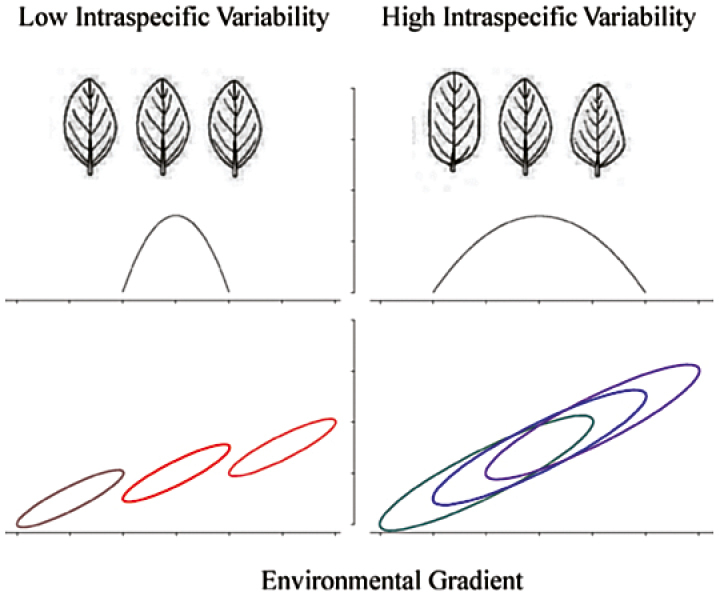
Annals of Botany 121: 1173–1182, 2018
doi: 10.1093/aob/mcx222
How functional traits modify species niche occupancy and community assembly is a vital question in ecology. He et al. measure specific leaf area (SLA), a key functional trait, for over 5000 plants across 207 subtropical woody species, and examine both inter- and intraspecific SLA variations along a soil fertility gradient with more than 1700 observational locations. Results show that low SLA both between and within species was associated with nitrogen-limited soils. More importantly, low intraspecific variability in SLA resulted in narrower niche occupancy and more predictable community assembly. This study highlights the importance of quantifying intraspecific trait variation to improve the understanding of species distribution along environmental gradients.
Authors: Dong He, Yongfa Chen, Kangning. Zhao, J. H. C. Cornelissen, and Chengjin Chu
Intraspecific trait variation provides ecological opportunity for polyploids
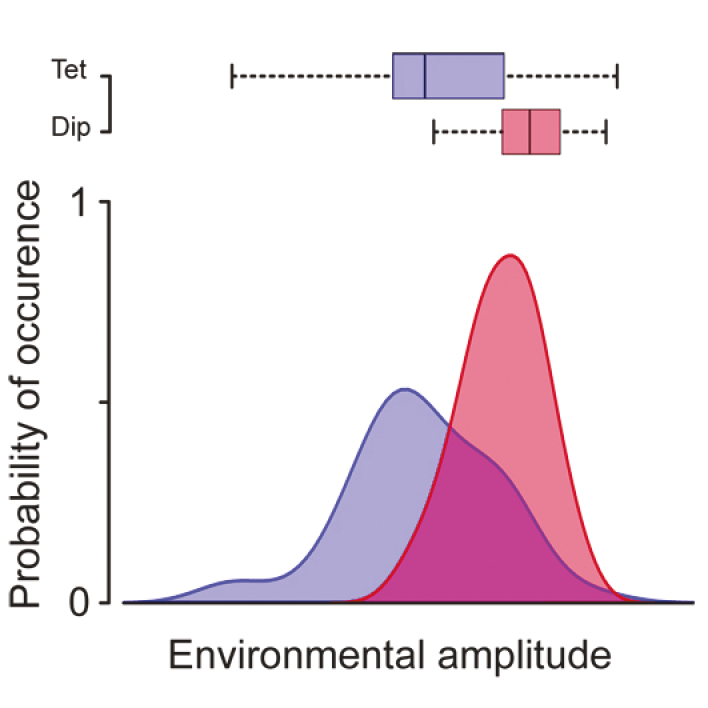
Annals of Botany 121: 1183–1196, 2018
doi: 10.1093/aob/mcy004
Ecological differentiation is a primary mechanism fostering polyploid establishment. However, within-species chromosomal and reproductive variability have usually been neglected in community ecology. In this study, Karunarathne et al. use Paspalum intermedium (Poaeae), a combination of ploidy and reproductive assessments and environmental niche modelling to explore the ecological consequences of within-species trait variation. The analyses show that shifts in ploidy level and reproductive mode promoted divergent changes in preferred niches of cytotypes and broadened ecological preferences of tetraploids. Sexual diploid specialists displace polyploids in core areas, while apomictic (asexual) tetraploid generalists are successful in peripheral areas promoting polyploid range expansions.
Authors: Piyal Karunarathne, Mara Schedler, Eric J. Martínez, Ana I. Honfi, Anastasiia Novichkova, and Diego Hojsgaard
Ecology of seed dormancy in a Brazilian savanna
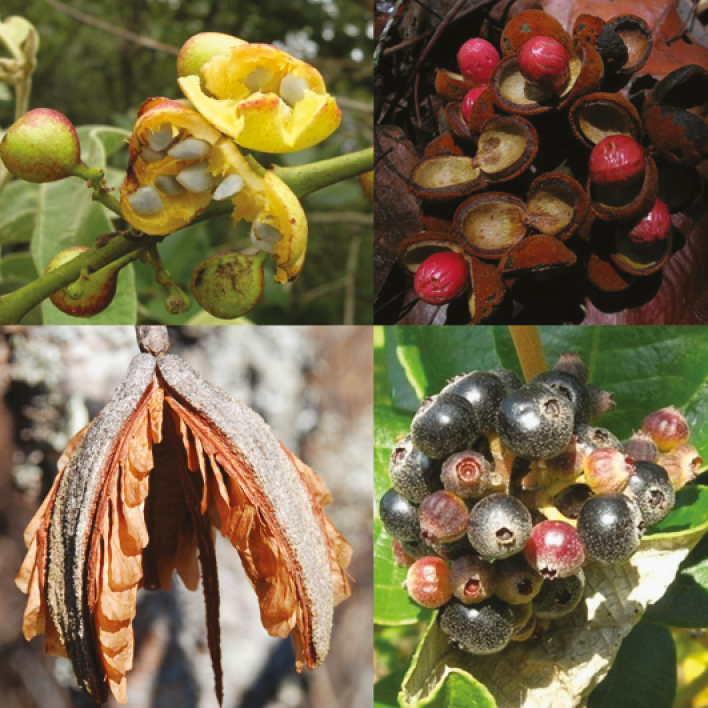
Annals of Botany 121: 1197–1209, 2018
doi: 10.1093/aob/mcy006
In seasonal tropical ecosystems, germination at the start of the rainy season maximizes the favourable period for plant establishment. Seedlings develop an efficient root system and store enough resources to survive the subsequent dry season. Using a database of species phenology and seed germination experiments, Escobar et al. describe the relationship of seed dormancy class with fruiting phenology, seed dispersal syndrome and timing of germination, at the community level in a Brazilian savanna. The results reveal how dormancy is modulated by the interaction between dispersal season and syndrome providing a better understanding of the evolution of seed dormancy in seasonally dry tropical habitats such as the savannas.
Authors: Diego F. E. Escobar, Fernando A. O. Silveira, and Leonor Patricia C. Morellato
Carpel and fruit development genes in Solanaceae
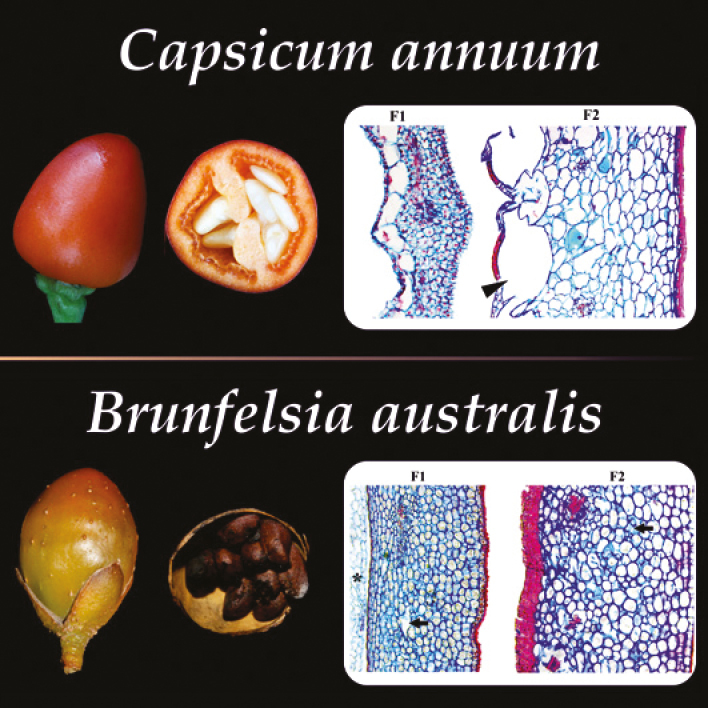
Annals of Botany 121: 1211–1230, 2018
doi: 10.1093/aob/mcy007
The genetic basis underlying fruit diversity is not yet fully understood, as mainly unrelated model species have been studied, such as fleshy (tomato) versus dry (arabidopsis) fruits. Ortiz Ramirez et al. assess the genetic regulatory network in fleshy berry (Solanum and Capsicum) versus dry capsule (Brunfelsia and Nicotiana) fruited species, sharing a common ancestor. The Solanaceae members exhibit a wide variety of anatomical features underlying dry and fleshy fruits, as well as a unique genetic fruit development toolkit as a result of independent gene duplication events. Downstream FRUITFULL-SHATTERPROOF the ALCATRAZ/SPATULA as well as the REPLUMLESS genes are differentially regulated in species with berries and capsules. The study portrays a more complex genetic scenario for carpel and fruit patterning in the Solanaceae than previously suggested.
Authors: Clara Inés Ortiz-Ramírez, Sayonara Plata-Arboleda, and Natalia Pabón-Mora
Xylogenesis and IADF formation in Mediterranean softwoods and hardwoods
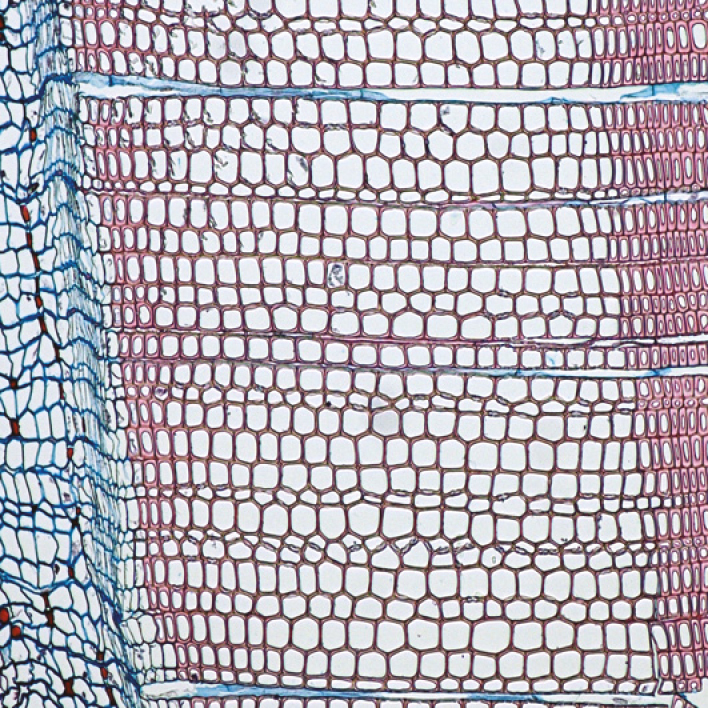
Annals of Botany 121: 1231–1242, 2018
doi: 10.1093/aob/mcy008
Mediterranean trees have patterns of cambial activity leading to intra-annual density fluctuations (IADFs), called false rings. Climate change is expected to alter wood formation and xylogenesis, affecting forest productivity. Balzano et al. follow xylogenesis and IADF formation in the softwood Pinus pinea (stone pine, Pinaceae) and hardwood Arbutus unedo (strawberry tree, Ericaceae), growing at the same site in southern Italy. Despite having different wood formation models and survival strategies, the production of earlywood, latewood and IADF cells is strongly controlled by climatic factors, similarly in both species. Obtained data supply useful information for dendroecological studies and help to interpret climatic signals in Mediterranean woods.
Authors: A. Balzano, K. Čufar, G. Battipaglia, M. Merela, P.Prislan, G. Aronne, and V. De Micco
Evolution and function of Scots pine aminopropyltransferases
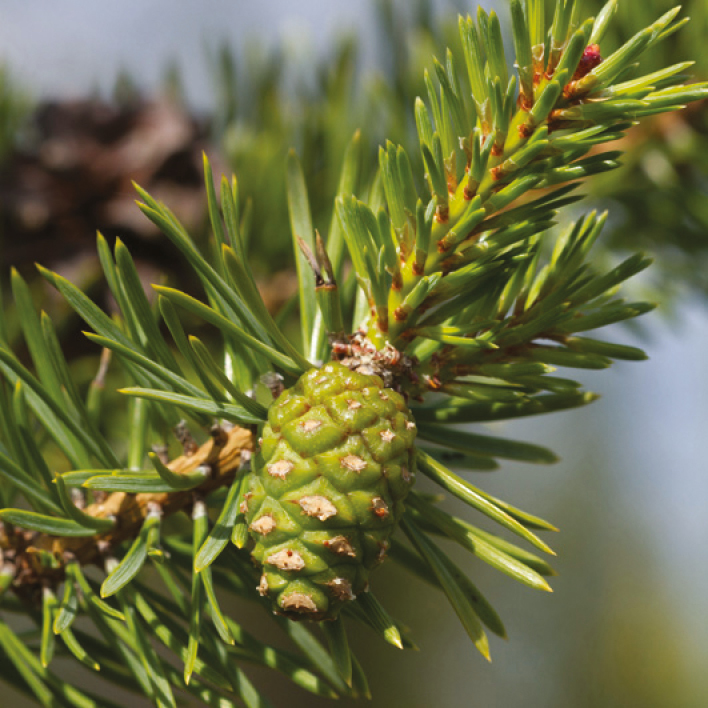
Annals of Botany 121: 1243–1256, 2018
doi: 10.1093/aob/mcy012
The aminopropyltransferases (APTs) including spermidine synthase (SPDS), spermine synthase (SPMS) and thermospermine synthase (ACL5) are essential enzymes in the polyamine biosynthesis pathway in plants. Vuosku et al. examine the function of the PsSPDS and PsACL5 proteins of Scots pine (Pinus sylvestris, Pinaceae). The gene structures, promoter regions and phylogenetic relationships of the PsSPDS and PsACL5 genes as well as the localization of gene expression in germinating Scots pine seeds and seedlings are analysed. They find that this evolutionary old conifer has a bifunctional SPDS also possessing SPMS activity unlike broadleaf trees, which lean on separate enzymes in polyamine biosynthesis.
Authors: Jaana Vuosku, Katja Karppinen, Riina Muilu-Mäkelä, Tomonobu Kusano, G.H.M. Sagor, Komlan Avia, Emmi Alakärppä, Johanna Kestilä, Marko Suokas, Kaloian Nickolov, Leena Hamberg, Outi Savolainen, Hely Häggman, and Tytti Sarjala
Mating system, ploidy and competition in Capsella species
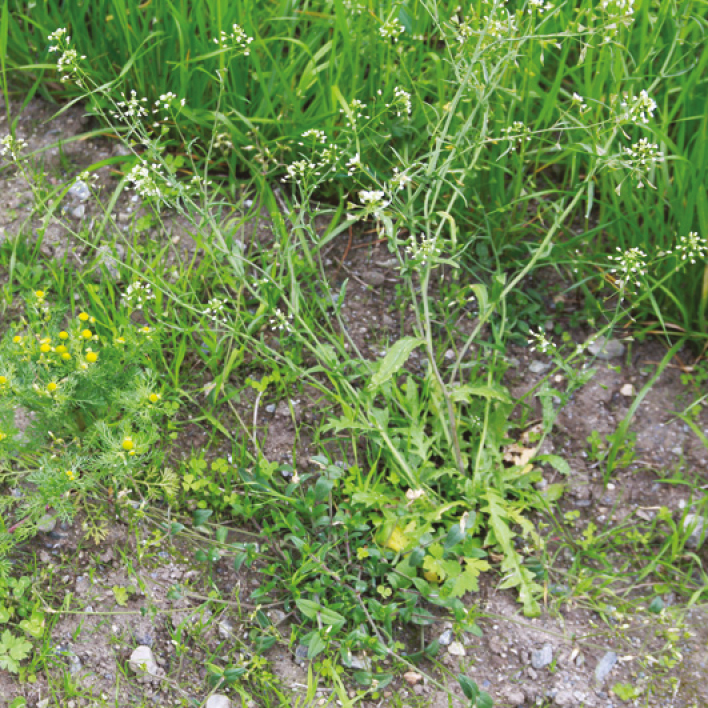
Annals of Botany 121: 1257–1264, 2018
doi: 10.1093/aob/mcy014
The evolution of selfing is often associated with changes in reproductive traits (the selfing syndrome). Reduced competitiveness has also been suggested to be associated with selfing. Petrone-Mendoza et al. experimentally test for this association in the Capsella genus (Brassicaceae), a model to study selfing evolution, with or without change in ploidy levels. They find that the diploid selfer (C. rubella) was most sensitive to competition, whereas the tetraploid selfer (C. bursa-pastoris) performed the best, the diploid outcrosser (C. grandiflora) being intermediate. This highlights the possible roles of ecological context and ploidy in the evolutionary trajectories of selfing species.
Authors: Sandra Petrone Mendoza, Martin Lascoux, and Sylvain Glémin


